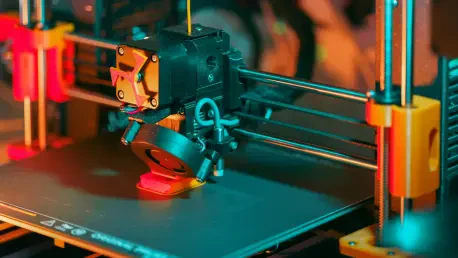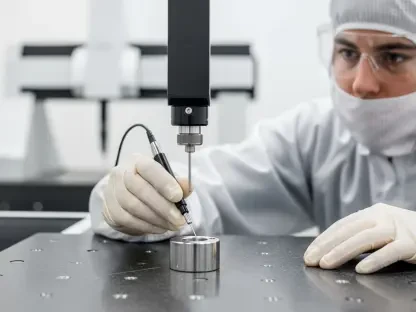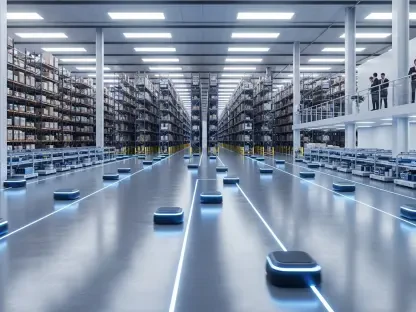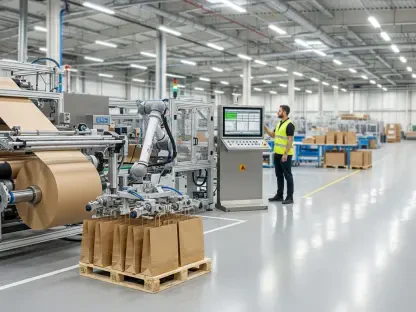In a world where efficiency and environmental responsibility are increasingly critical, 3D printing—often referred to as additive manufacturing (AM)—is emerging as a transformative force across multiple sectors, evolving from a niche prototyping tool into a powerful solution. This technology addresses complex challenges in industries ranging from aerospace to construction by redefining production methods, slashing waste, enabling customization, and fostering sustainable practices. Imagine a future where intricate components are crafted with minimal material loss, buildings rise with a smaller carbon footprint, and even water treatment systems benefit from precision-engineered tools. The implications are staggering, and the momentum behind this innovation shows no signs of slowing. This exploration delves into the remarkable ways 3D printing is reshaping industrial landscapes while prioritizing sustainability, highlighting specific advancements that demonstrate its vast potential for global impact.
Setting New Benchmarks with Standardization
The journey of 3D printing into mainstream industry has faced significant obstacles, particularly around consistency and communication across supply chains. However, a pivotal development is changing the game: the introduction of the F3774 standard by ASTM International’s F42 committee. This framework is designed to streamline interactions among designers, manufacturers, and clients by establishing clear guidelines for the procurement and delivery of 3D printed parts. By minimizing misunderstandings and ensuring that specifications for design, production, and validation are universally understood, this standard is fostering trust in additive manufacturing processes. It addresses a long-standing barrier to adoption, making it easier for businesses to integrate this technology into their operations without fear of misalignment or costly errors. As a result, industries can now look forward to a more cohesive and reliable approach to utilizing 3D printing on a larger scale, setting the stage for widespread acceptance.
What sets the F3774 standard apart is its adaptability to diverse business needs, a feature that promises to accelerate the growth of additive manufacturing. Its modular structure allows companies to selectively implement components that align with their specific requirements, rather than adhering to a rigid, one-size-fits-all system. This flexibility means that small enterprises and large corporations alike can benefit from the standard without overhauling their existing processes. Additionally, the concept of a “digital thread” embedded within this framework connects every phase of production—from initial concept to final output—ensuring seamless data flow and reducing the likelihood of miscommunication. Such an approach not only enhances efficiency but also builds a foundation for future innovations in 3D printing. As more stakeholders adopt these guidelines, the technology is poised to become a cornerstone of industrial practices, driving consistency and reliability across global markets.
Innovating Materials for High-Stakes Industries
In sectors like aerospace and energy, where components must endure extreme conditions, 3D printing is pushing the boundaries of what materials can achieve. A notable example comes from QuesTek Innovations, which is spearheading the development of a high-temperature alloy specifically optimized for additive manufacturing. This material is engineered to withstand the intense demands of advanced engines, power generation systems, and propulsion technologies, areas where traditional materials often fall short. Supported by prominent industry players, the project employs sophisticated computational design tools to fine-tune the alloy’s properties, ensuring it meets stringent performance criteria. This advancement represents a significant leap forward, as it enables the creation of parts that are not only durable but also tailored to the unique capabilities of 3D printing, thereby enhancing overall system efficiency.
Beyond sheer performance, the development of this high-temperature alloy underscores a broader commitment to sustainability within high-stakes industries. By optimizing materials for additive manufacturing, the approach minimizes waste during production, a critical factor given the resource-intensive nature of aerospace and energy applications. Furthermore, the alloy contributes to more efficient engines and systems, which in turn reduces emissions and energy consumption over time. This dual focus on performance and environmental impact also strengthens supply chain resilience, addressing challenges like material scarcity that have become increasingly pressing. Through such innovations, 3D printing is demonstrating its capacity to balance the need for cutting-edge technology with the imperative to reduce ecological footprints, offering a model for how industries can evolve responsibly while maintaining competitive edges in demanding markets.
Transforming Construction with Sustainable Practices
The construction industry, notorious for its heavy environmental toll, is undergoing a remarkable transformation thanks to 3D printing. A groundbreaking collaboration between Autodesk Research and Additive Tectonics is redefining how concrete floor slabs are built, introducing a method that drastically cuts down on waste and carbon emissions. This initiative utilizes 3D printed stay-in-place formwork crafted from a wood-mineral composite that actively sequesters carbon, paired with low-carbon geopolymer concrete. Instead of relying on traditional steel rebar, the team incorporates natural flax fiber reinforcement, significantly reducing the reliance on high-impact materials. This innovative combination results in structures that are not only lighter and stronger but also far more environmentally friendly, challenging long-held assumptions about what sustainable building can achieve in practice.
Further amplifying the impact of this approach is the integration of advanced design tools to optimize material usage and structural integrity. Software like Autodesk Inventor Nastran and Dynamo enables precise customization of the floor slabs’ geometry, ensuring that every element is used efficiently without compromising on strength. This meticulous optimization slashes the overall material footprint, addressing one of the construction sector’s most persistent issues: excessive waste. More importantly, the scalability of this model suggests that it could be applied to a wide range of building projects, from residential to commercial, paving the way for a new standard in eco-conscious construction. By showcasing how 3D printing can revolutionize traditional practices with greener alternatives, this project highlights the technology’s potential to reshape an industry responsible for a significant share of global emissions, offering a tangible path toward sustainability.
Addressing Environmental Challenges with Precision Tools
Even in the realm of environmental engineering, 3D printing is proving to be a vital ally in solving pressing global issues, such as water contamination. A collaborative effort by researchers from Gdansk University of Technology, Università Politecnica delle Marche, and Lund University has yielded a novel solution: 3D printed boron-nitrogen-doped carbon electrodes designed to combat pharmaceutical pollutants in wastewater. These metal-free electrodes, created through advanced fabrication techniques like phase inversion and microwave plasma-enhanced chemical vapor deposition, excel at electrochemical oxidation, breaking down harmful contaminants with remarkable efficiency. This development tackles a niche yet critical problem, as pharmaceutical residues in water supplies pose growing risks to ecosystems and public health, often evading conventional treatment methods.
The success of these electrodes is further enhanced by the use of computational fluid dynamics simulations, which optimize their design for peak performance in real-world conditions. This precision engineering ensures that the electrodes achieve higher degradation rates for specific pollutants, demonstrating the power of combining 3D printing with digital modeling to address complex challenges. Beyond the immediate application, this breakthrough illustrates the adaptability of additive manufacturing to specialized fields outside traditional industrial contexts. It serves as a testament to the technology’s versatility, showing that it can deliver scalable, sustainable solutions to environmental concerns that impact communities worldwide. As such innovations gain traction, they underscore the broader potential of 3D printing to contribute meaningfully to global efforts in safeguarding natural resources and improving quality of life.
Paving the Way for a Sustainable Industrial Future
Reflecting on the strides made through 3D printing, it becomes evident that this technology has already carved out a significant role in reshaping industrial and environmental landscapes. The establishment of standards like F3774 by ASTM International marks a turning point, ensuring that communication barriers across supply chains are dismantled. Innovations in materials, exemplified by high-temperature alloys, showcase how performance and sustainability intertwine to meet the demands of critical sectors. Similarly, sustainable construction practices redefine building norms, while 3D printed electrodes offer a lifeline for cleaner water. Moving forward, the focus should shift to scaling these advancements—encouraging wider adoption of standards, investing in material research, and promoting eco-friendly building solutions. Collaboration between industries, academia, and policymakers will be essential to overcome remaining hurdles like cost and education gaps. By prioritizing these steps, the legacy of additive manufacturing can continue to grow, driving progress toward a more efficient and sustainable world.









